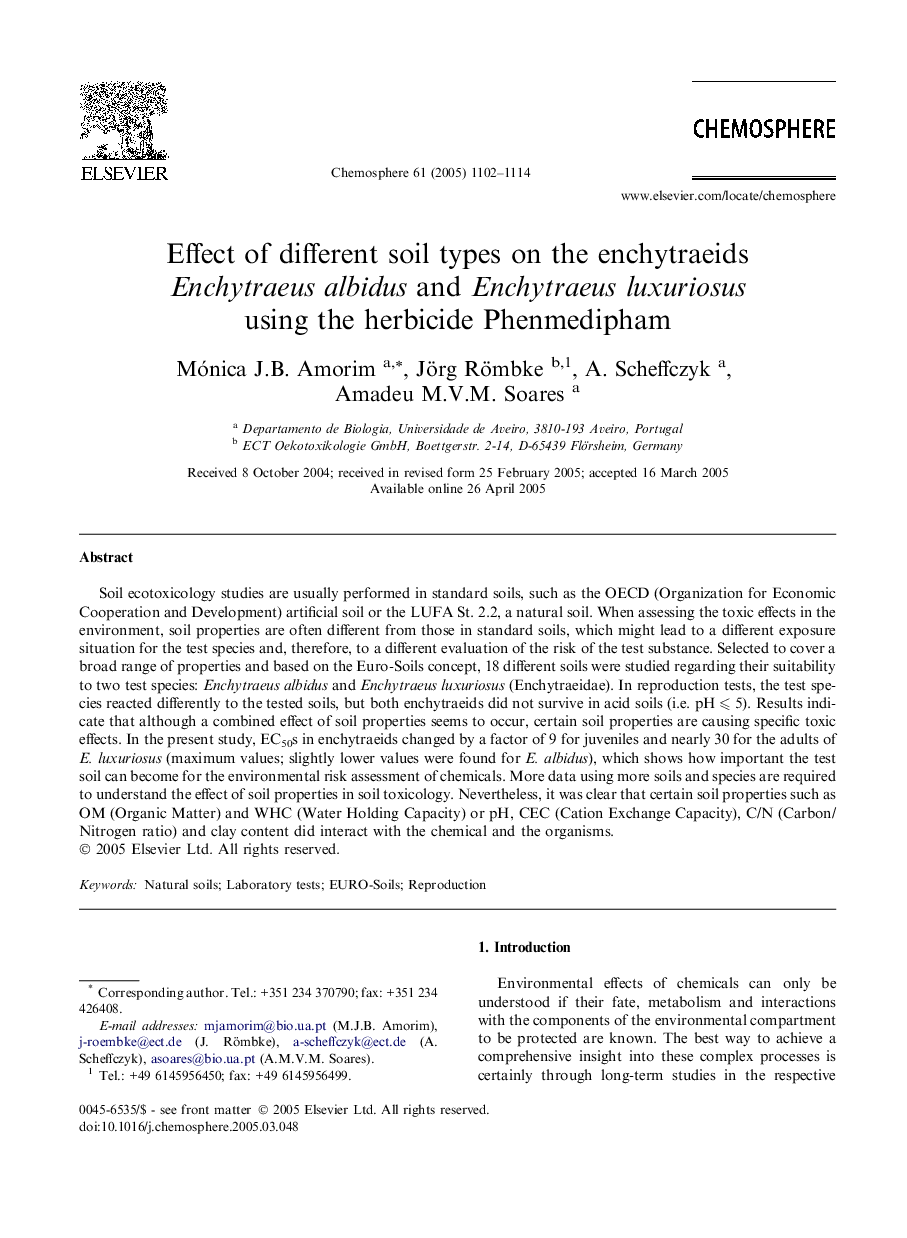| کد مقاله | کد نشریه | سال انتشار | مقاله انگلیسی | نسخه تمام متن |
|---|---|---|---|---|
| 9451395 | 1307817 | 2005 | 13 صفحه PDF | دانلود رایگان |
عنوان انگلیسی مقاله ISI
Effect of different soil types on the enchytraeids Enchytraeus albidus and Enchytraeus luxuriosus using the herbicide Phenmedipham
دانلود مقاله + سفارش ترجمه
دانلود مقاله ISI انگلیسی
رایگان برای ایرانیان
کلمات کلیدی
موضوعات مرتبط
علوم زیستی و بیوفناوری
علوم محیط زیست
شیمی زیست محیطی
پیش نمایش صفحه اول مقاله

چکیده انگلیسی
Soil ecotoxicology studies are usually performed in standard soils, such as the OECD (Organization for Economic Cooperation and Development) artificial soil or the LUFA St. 2.2, a natural soil. When assessing the toxic effects in the environment, soil properties are often different from those in standard soils, which might lead to a different exposure situation for the test species and, therefore, to a different evaluation of the risk of the test substance. Selected to cover a broad range of properties and based on the Euro-Soils concept, 18 different soils were studied regarding their suitability to two test species: Enchytraeus albidus and Enchytraeus luxuriosus (Enchytraeidae). In reproduction tests, the test species reacted differently to the tested soils, but both enchytraeids did not survive in acid soils (i.e. pH ⩽ 5). Results indicate that although a combined effect of soil properties seems to occur, certain soil properties are causing specific toxic effects. In the present study, EC50s in enchytraeids changed by a factor of 9 for juveniles and nearly 30 for the adults of E. luxuriosus (maximum values; slightly lower values were found for E. albidus), which shows how important the test soil can become for the environmental risk assessment of chemicals. More data using more soils and species are required to understand the effect of soil properties in soil toxicology. Nevertheless, it was clear that certain soil properties such as OM (Organic Matter) and WHC (Water Holding Capacity) or pH, CEC (Cation Exchange Capacity), C/N (Carbon/Nitrogen ratio) and clay content did interact with the chemical and the organisms.
ناشر
Database: Elsevier - ScienceDirect (ساینس دایرکت)
Journal: Chemosphere - Volume 61, Issue 8, December 2005, Pages 1102-1114
Journal: Chemosphere - Volume 61, Issue 8, December 2005, Pages 1102-1114
نویسندگان
Mónica J.B. Amorim, Jörg Römbke, A. Scheffczyk, Amadeu M.V.M. Soares,